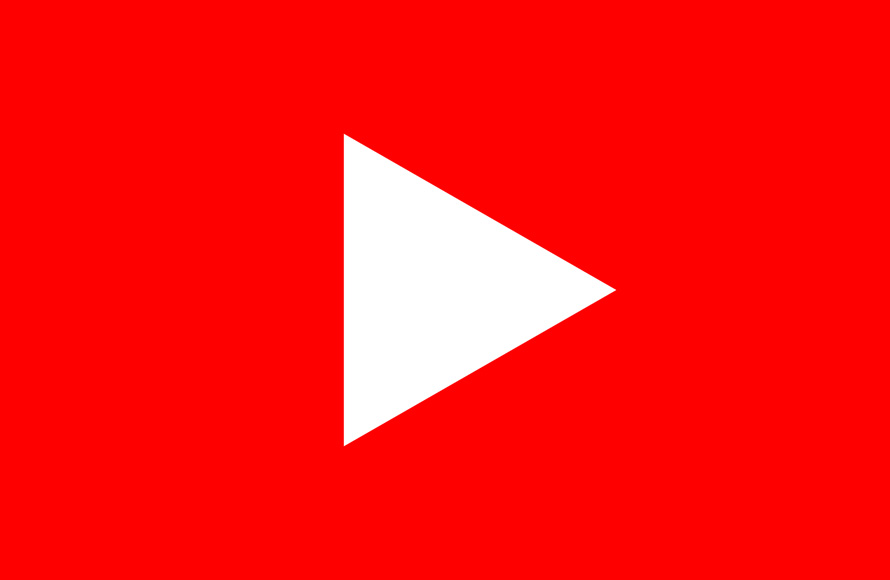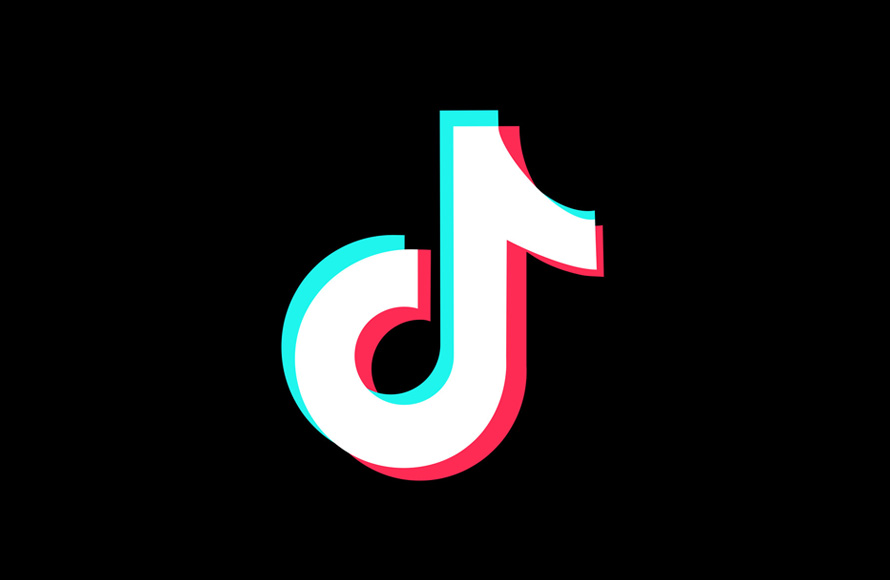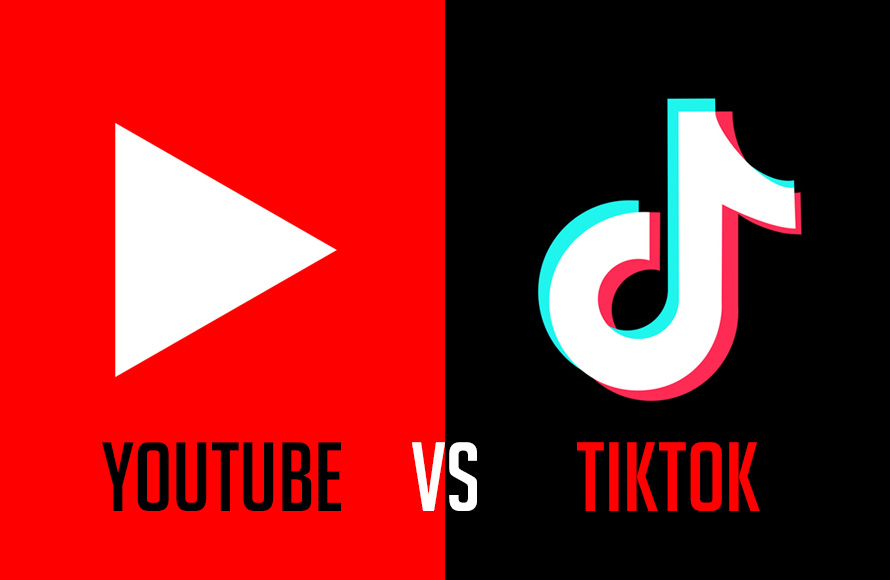ticIn the swiftly changing realm of online content creation, platforms like YouTube and TikTok have emerged as dominant players, offering creators unique opportunities for online earning. YouTube vs TikTok in a battle for user attention, offering diverse content and shorter, trendy videos respectively, shaping digital entertainment. As the digital era continues to redefine the way we consume content, the debate surrounding the superior platform for online earning between YouTube and TikTok intensifies.
This comprehensive article aims to dissect the strengths and weaknesses of each platform, providing insights into which might be the more lucrative option for aspiring online earners.
You may be interested in the following articles as well.
- 10 Top Visual Trends For 2024
- Mobile App Development Trends That Are Expected to Roll Out In 2024
- The Power of a Well-Designed Logo: How to Create a Memorable Brand Identity
- Branding Beyond the Logo: Building a Cohesive Visual Identity System
YouTube vs TikTok
YouTube: The Pioneering Giant
YouTube stands as the behemoth of online video platforms, shaping the digital landscape and providing a stage for creators worldwide to showcase their talents. Established in 2005, YouTube has evolved from a simple video-sharing platform to a dynamic ecosystem with a global reach, offering diverse content across various genres. As the pioneering giant, YouTube has become synonymous with online video consumption, providing both creators and audiences with unique opportunities and experiences.

One of YouTube’s primary strengths lies in its robust monetization options. The YouTube Partner Program, introduced in 2007, allows creators to earn revenue through advertisements displayed on their videos. This ad-based model, coupled with YouTube’s extensive reach, has transformed many individuals into successful content creators, enabling them to turn their passion into a viable source of income. Creators can further supplement their earnings through various avenues such as channel memberships, where subscribers pay a monthly fee for exclusive perks, and the integration of Super Chat and Super Stickers during live streams, allowing fans to directly contribute to their favorite creators.
YouTube’s appeal extends beyond its monetization options. The platform’s emphasis on long-form content sets it apart, making it an ideal space for in-depth tutorials, educational content, and extensive product reviews. The versatility of YouTube’s content format caters to a broad spectrum of audiences, contributing to its status as the go-to platform for diverse content genres, from gaming and lifestyle vlogs to educational channels and entertainment.
In addition to its monetization and content diversity, YouTube offers creators the opportunity to build a brand and establish a long-term presence. Success on YouTube often hinges on the creator’s ability to deliver high-quality content consistently. As a result, creators can cultivate a loyal audience over time, fostering a community around their channel. This long-term engagement contributes to the platform’s stability, as creators can establish themselves as authorities in their respective niches.
However, YouTube is not without its challenges. The platform’s saturation in certain niches can make it challenging for new creators to gain visibility. Additionally, algorithm changes and concerns about demonetization pose risks for content creators, requiring adaptability and strategic content planning.
Monetization Opportunities on YouTube
YouTube, the video-sharing platform that has become synonymous with online content consumption, has not only transformed the way we access information and entertainment but has also created a thriving ecosystem for creators to turn their passion into a lucrative profession. At the core of this ecosystem lies a diverse array of monetization opportunities, allowing content creators to earn revenue through various channels. In this exploration of YouTube’s monetization landscape, we will delve into the key avenues that creators leverage to earn money on the platform.

-
Ad Revenue through the YouTube Partner Program:
The cornerstone of YouTube monetization is the YouTube Partner Program (YPP), established to reward creators for their contributions to the platform. To qualify for YPP, a creator must meet specific eligibility criteria, including having more than 4,000 valid public watch hours in the last 12 months and more than 1,000 subscribers. Once accepted into the program, creators can monetize their content through advertisements.
YouTube serves ads before, during, or after a video, with revenue generated based on factors like ad engagement, viewer demographics, and geographic location. Creators earn a share of the advertising revenue, providing a consistent income stream for those with popular and engaging content.
-
Channel Memberships:
YouTube introduced Channel Memberships as a way for creators to establish a more direct and consistent revenue stream. With this feature, creators can offer channel memberships to their audience for a monthly fee. In return, members gain access to exclusive perks such as custom badges, emojis, and members-only content.
Channel Memberships not only provide creators with a stable source of income but also foster a sense of community among their most dedicated fans. This model creates a symbiotic relationship where fans feel more connected to the creator, and creators can rely on steady support from their loyal audience.
-
Super Chat and Super Stickers:
For creators who engage with their audience through live streams, Super Chat and Super Stickers offer an additional monetization avenue. Viewers can purchase these features during a live stream to highlight their messages or simply show support. Super Chat allows viewers to pin their messages to the top of the chat, ensuring that creators see and respond to their contributions.
Super Stickers, on the other hand, are animated stickers that viewers can purchase to express their emotions during a live stream. Both Super Chat and Super Stickers provide creators with instant financial support and add an interactive element to live broadcasts.
-
YouTube Premium Revenue:
YouTube Premium, a subscription-based service that offers an ad-free experience along with access to YouTube Originals, plays a role in the revenue ecosystem. Creators earn a share of the revenue generated from YouTube Premium subscribers who watch their content.
While this model doesn’t directly involve ads, it provides an additional stream of income for creators as they receive compensation based on the time Premium subscribers spend watching their videos. This encourages creators to produce engaging and high-quality content that keeps viewers coming back.
-
Merchandise Shelf Integration:
Recognizing the value of creators’ personal brands, YouTube has integrated a merchandise shelf feature directly on channel pages. Creators can showcase and sell their branded merchandise, from T-shirts to accessories, through this built-in feature.
The merchandise shelf not only serves as an additional revenue stream but also enhances the overall viewer experience. Fans have the opportunity to support their favorite creators by purchasing tangible items that reflect the creator’s brand and style.
-
YouTube Shorts Fund:
In response to the rising popularity of short-form content and to incentivize creators to embrace YouTube Shorts, the platform introduced the Shorts Fund. This fund provides financial support to creators producing engaging and original short-form content.
While the eligibility criteria for the Shorts Fund may vary, it exemplifies YouTube’s commitment to fostering creativity across different content formats. Creators who tap into the potential of short-form content can access additional financial support through this fund.
-
Affiliate Marketing and Sponsored Content:
Beyond the direct monetization features provided by YouTube, creators often explore external opportunities for revenue generation. Affiliate marketing involves promoting products or services and earning a commission for every sale made through the creator’s unique affiliate link.
Similarly, sponsored content involves collaborations with brands that pay creators to feature their products or services in their videos. While these methods may not be native to YouTube, they represent additional avenues for creators to diversify their income streams and establish partnerships with brands aligned with their content.
YouTube: Long-Form Content and Diverse Niches
One of the distinguishing features that sets YouTube apart in the digital content landscape is its embrace of long-form content and the vast array of diverse niches that creators explore. Unlike platforms with strict time constraints, YouTube’s flexibility allows content creators to delve deep into their subjects, catering to audiences seeking in-depth information, tutorials, and a broad spectrum of entertainment. In this exploration of YouTube’s commitment to long-form content and diverse niches, we’ll delve into the reasons behind its success and the opportunities it provides for creators.

-
Ideal for In-Depth Tutorials and Educational Content:
YouTube’s longer video format provides a perfect canvas for creators to deliver comprehensive tutorials and educational content. From intricate coding tutorials and language learning lessons to detailed DIY projects and academic explanations, the extended runtime allows creators to cover topics thoroughly. This flexibility benefits both content creators and viewers, as creators can delve into complex subjects, and viewers can engage with detailed, step-by-step guides at their own pace.
-
Extensive Product Reviews and Unboxing Videos:
The platform’s long-form nature is particularly advantageous for product reviews and unboxing videos. Creators can take the time to thoroughly test and assess products, offering viewers a comprehensive understanding before making purchasing decisions. The extended runtime allows for detailed examinations, comparisons, and real-world use demonstrations, fostering a sense of trust between creators and their audience.
-
Catering to Diverse Audiences:
YouTube’s commitment to long-form content is reflected in its diverse content ecosystem. Creators have the freedom to explore niche topics and cater to specific audience interests. From obscure hobbies and unique skillsets to cultural explorations and sub-genres within popular categories, YouTube’s diverse niches thrive due to the platform’s openness to a wide range of content. This inclusivity allows creators to find their niche and build a dedicated audience, no matter how niche or unconventional their content may be.
-
Expansive Genre Coverage:
The platform covers an expansive range of genres, attracting viewers with varied interests. Whether it’s gaming, lifestyle vlogs, beauty and fashion, science, technology, or niche hobbies like model railroading or historical reenactments, YouTube’s long-form content model accommodates the diverse passions and preferences of its global audience. This diversity contributes to YouTube’s status as a one-stop destination for virtually any type of content one might seek.
-
Documentary and Storytelling Formats:
Long-form content on YouTube extends beyond tutorials and reviews; it also embraces documentary-style content and storytelling formats. Creators can craft compelling narratives, exploring real-world issues, historical events, or personal experiences. This storytelling versatility enables creators to connect with their audience on a deeper level, fostering engagement and emotional resonance.
-
In-Depth Interviews and Conversations:
YouTube’s long-form model is conducive to in-depth interviews and conversations. Creators can invite guests, experts, or fellow creators for extended discussions on various topics. This format allows for a nuanced exploration of ideas, fostering intellectual engagement and providing a platform for in-depth conversations that might not find a home in shorter formats.
-
Entertainment Beyond Snippets:
While shorter, bite-sized content has its appeal, YouTube’s emphasis on long-form content ensures that audiences seeking extended entertainment are not neglected. Creators can produce sitcoms, web series, and feature-length films, offering viewers an immersive entertainment experience on a platform traditionally associated with shorter video formats.
In conclusion, YouTube remains the pioneering giant in the online video space, offering creators a multifaceted platform to showcase their talents and earn a living. Its extensive monetization options, emphasis on long-form content, and the potential for building a lasting brand make it a powerhouse in the digital content creation realm. As the landscape continues to evolve, YouTube’s influence persists, providing creators with a dynamic platform to share their stories, entertain audiences, and, most importantly, monetize their creativity.
TikTok: The Short-Form Phenomenon
In the dynamic world of social media, TikTok has emerged as a cultural phenomenon, redefining the way users engage with short-form content. Launched in 2016, TikTok quickly gained global popularity, particularly among younger audiences, for its innovative approach to video creation and consumption. As the short-form powerhouse, TikTok has created a unique space for creators to produce quick, engaging, and easily shareable content, sparking trends and challenges that captivate millions worldwide.

At the heart of TikTok’s success lies its distinctive format, allowing users to create videos with a maximum duration of 60 seconds. This bite-sized approach has proven to be a game-changer, catering to the fast-paced, attention-grabbing preferences of the digital era. Creators on TikTok leverage this short-form format to convey messages, showcase talents, and participate in viral challenges, making it an ideal platform for quick, entertaining content that thrives on creativity and innovation.
TikTok’s monetization features contribute to its appeal for creators seeking online earning opportunities. The introduction of the Creator Fund allows popular TikTok creators to receive financial support based on their engagement metrics. Moreover, live gifts during live streams enable fans to send virtual gifts to their favorite creators, providing an immediate and direct source of income. These monetization avenues, though different from the ad-centric model of platforms like YouTube, empower TikTok creators to turn their passion for content creation into a sustainable source of revenue.
The platform’s emphasis on trends and challenges adds another layer to its short-form allure. TikTok’s algorithm is designed to promote trending content, propelling creators to rapid fame and success. Participating in viral challenges and riding the wave of trending content enables creators to swiftly expand their audience and increase visibility, contributing to the platform’s reputation for creating internet sensations overnight.
TikTok’s rapid growth and virality are evident in its ability to facilitate content discovery and audience expansion. Unlike traditional social media platforms, TikTok’s algorithm prioritizes content based on user engagement, allowing even new creators to gain visibility quickly. The platform’s ‘For You’ page, tailored to individual user preferences, serves as a constant source of diverse and trending content, fostering an environment where creativity thrives and content discovery is both accessible and dynamic.
However, TikTok is not without its challenges. The platform’s short-form nature may limit certain types of content creation that thrive on longer formats. Additionally, the transient nature of trends and challenges poses the risk of creators fading into obscurity after a viral moment, requiring ongoing adaptability and innovation to maintain relevance.
Monetization Features on TikTok
TikTok, the social media sensation that skyrocketed to fame for its innovative short-form video format, has not only transformed the way users engage with content but has also created an ecosystem where creators can turn their creativity into a source of income. Unlike traditional platforms, TikTok has embraced a unique approach to monetization, offering creators a range of features designed to reward them for their contributions. In this exploration of TikTok’s monetization landscape, we will delve into the key avenues that creators leverage to earn money on the platform.

-
Creator Fund:
One of TikTok’s pioneering monetization features is the Creator Fund, introduced to financially support creators who meet certain eligibility criteria. To qualify for the Creator Fund, creators must be at least 18 years old, have accumulated at least 100,000 followers, and have received a specified amount of views in the last 30 days. Once accepted into the fund, creators receive a share of the fund’s resources based on their video performance.
The Creator Fund is a direct acknowledgment of the value TikTok places on its creators. It provides an additional revenue stream, allowing creators to be compensated for their creative efforts and the engagement they generate on the platform. This model aligns with TikTok’s commitment to supporting creators in their journey to make a living through content creation.
-
Live Gifts:
TikTok Live allows creators to interact with their audience in real-time, and the platform has integrated a monetization feature known as Live Gifts. During live broadcasts, viewers can purchase virtual gifts using TikTok coins, with each gift contributing to the creator’s earnings. These gifts range from small icons to more elaborate virtual items, providing fans with a fun and interactive way to support their favorite creators.
Live Gifts not only serve as a direct source of income for creators but also enhance the live streaming experience for both creators and viewers. The feature fosters a sense of community and allows fans to express their appreciation for the content in a tangible way, creating a dynamic and engaging live streaming environment.
-
Brand Partnerships and Influencer Marketing:
While not a native feature within the TikTok platform, brand partnerships and influencer marketing have become integral components of TikTok monetization. Brands recognize the potential of TikTok’s reach and engagement, and they collaborate with creators to promote their products or services.
Creators can monetize their influence by partnering with brands for sponsored content. These collaborations often involve creators integrating the brand’s offerings seamlessly into their videos, reaching a wide audience and providing value to both creators and brands. The growing trend of influencer marketing on TikTok highlights the platform’s role as a lucrative space for creators to establish partnerships and generate income beyond platform-specific features.
-
TikTok Ads:
TikTok Ads enable businesses to create and launch advertising campaigns directly on the platform. While this feature is more geared toward businesses and advertisers, it indirectly contributes to the overall monetization landscape for creators. As businesses invest in TikTok Ads to reach a wider audience, creators may experience increased visibility and engagement, translating to potential growth in followers and, consequently, enhanced monetization opportunities.
TikTok Ads, in the form of in-feed ads, branded hashtags, and branded effects, create a symbiotic relationship where brands leverage the platform’s reach, and creators benefit from increased exposure and potential collaboration opportunities.
-
TikTok Coins and Gifts:
In addition to Live Gifts during live streams, TikTok offers another virtual currency known as TikTok Coins. Users can purchase TikTok Coins with real money, and they can then use these coins to buy virtual gifts for their favorite creators. Creators receive a portion of the revenue generated from TikTok Coin purchases, providing an additional avenue for direct support from their audience.
TikTok Coins and Gifts not only offer a way for fans to contribute financially to their favorite creators but also create a virtual economy within the platform. Creators who establish a strong connection with their audience can benefit significantly from these virtual gestures, making their content creation journey more sustainable.
-
TikTok Challenges and Brand Campaigns:
TikTok’s emphasis on challenges has become a defining feature of the platform’s content culture. Brands often leverage this trend by creating sponsored challenges or campaigns, inviting creators to participate and generate content aligned with a specific theme. Creators can earn compensation for their participation in these brand-initiated challenges.
TikTok Challenges and Brand Campaigns not only provide creators with financial rewards but also elevate their visibility on the platform. Successful participation in popular challenges can lead to increased followers, engagement, and potential collaboration opportunities, contributing to a creator’s overall monetization strategy.
-
TikTok Premium:
TikTok Premium is a subscription-based service that offers users an ad-free experience, exclusive content, and additional features. While the primary focus of TikTok Premium is on enhancing the user experience, it indirectly benefits creators as well. Creators receive a share of the revenue generated from TikTok Premium subscriptions, creating another avenue for them to monetize their content.
TikTok Premium aligns with the platform’s commitment to compensating creators for their contributions. By providing an alternative ad-free experience for subscribers, TikTok Premium creates an additional revenue stream that supports creators in their creative endeavors.
TikTok: Bite-Sized Content and Trend Riding
TikTok, the short-form video platform that took the social media world by storm, has redefined the way users consume and create content. At the heart of TikTok’s success lies its commitment to bite-sized content and the cultural phenomenon of trend riding. With a maximum video duration of 60 seconds, TikTok has created a space where users can quickly capture attention, express creativity, and participate in trends that fuel the platform’s dynamic and viral nature.

-
Perfect for Quick, Engaging, and Easily Shareable Content:
TikTok’s defining feature is its short-form content format, where users can create videos that are no longer than a minute. This concise format is ideal for users with shorter attention spans, aligning with the fast-paced nature of today’s digital culture. Creators can convey a message, showcase a talent, or share a moment in a matter of seconds, making content easily digestible and shareable.
-
Trend-Focused Nature:
TikTok thrives on trends, challenges, and viral content. The platform’s algorithm is designed to promote popular and trending content, creating a constantly evolving landscape where users engage with the latest challenges or dance crazes. Trend riding, or participating in these viral trends, has become an integral part of TikTok culture. Creators who successfully ride the wave of a trending hashtag or challenge often experience rapid growth and increased visibility.
-
Swift Content Discovery and Rapid Growth:
TikTok’s algorithm prioritizes content discovery, ensuring that even new creators have the opportunity to reach a wide audience quickly. The ‘For You’ page, personalized for each user based on their interactions, serves as a constant stream of diverse and trending content. This emphasis on content discovery facilitates rapid growth for creators, allowing them to gain followers and recognition in a shorter timeframe compared to traditional platforms.
-
Virality and Community Engagement:
TikTok’s short-form, trend-focused model contributes to the platform’s viral nature. A single well-executed video can quickly gain millions of views and propel a creator to internet stardom. This potential for virality encourages creators to experiment with different content styles and engage with the community actively. The ability to go viral provides creators with opportunities for increased visibility, brand collaborations, and potential monetization.
-
Fickle Trends and the Risk of Fading Into Obscurity:
While trend riding on TikTok can lead to rapid growth, the platform’s trends are fickle and can change swiftly. Creators who fail to adapt or latch onto fading trends risk losing relevance and fading into obscurity. TikTok’s ever-evolving content landscape requires creators to stay attuned to current trends and continuously innovate to maintain and grow their audience.
-
Creative Expression and Individuality:
Despite the trend-focused nature of TikTok, the platform also celebrates individual creativity. Creators have the freedom to experiment with various content genres, express their unique personalities, and contribute to the platform’s diverse content landscape. While trend riding is prevalent, TikTok’s versatility allows creators to carve out niches and build communities around their individual styles.
-
Global Participation in Trends:
TikTok’s reach extends globally, allowing trends and challenges to transcend borders and cultures. A trend that starts in one part of the world can quickly become a global sensation, fostering a sense of interconnectedness among TikTok users worldwide. This global participation contributes to the platform’s vibrant and diverse content ecosystem.
In conclusion, TikTok has revolutionized the social media landscape with its short-form phenomenon. By embracing the appeal of quick, engaging content, TikTok has provided a platform where creativity knows no bounds, offering a unique space for creators to showcase their talents, participate in trends, and, crucially, monetize their efforts. As the short-form giant continues to shape the digital landscape, TikTok remains a dynamic hub for creators seeking to captivate audiences and make a lasting impact in the world of online content creation.


















You can’t compare Giant with Ant. TikTok is just an app with limits. YouTube is the boss.
The choice between YouTube and TikTok depends on individual preferences. YouTube, a longstanding platform, offers diverse, long-form content. TikTok, known for short, engaging videos, appeals to a younger audience.